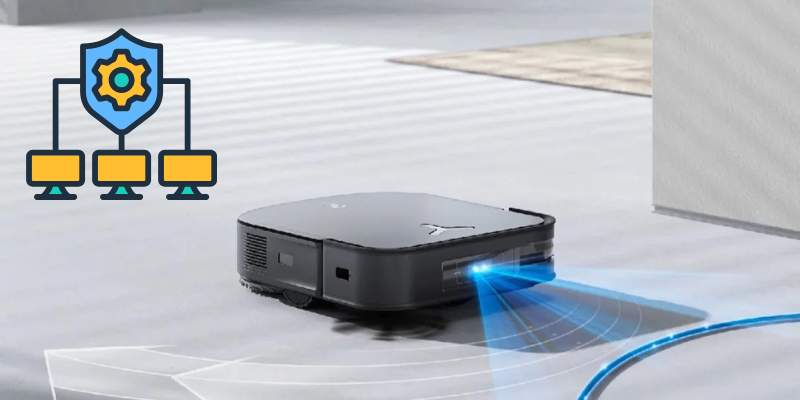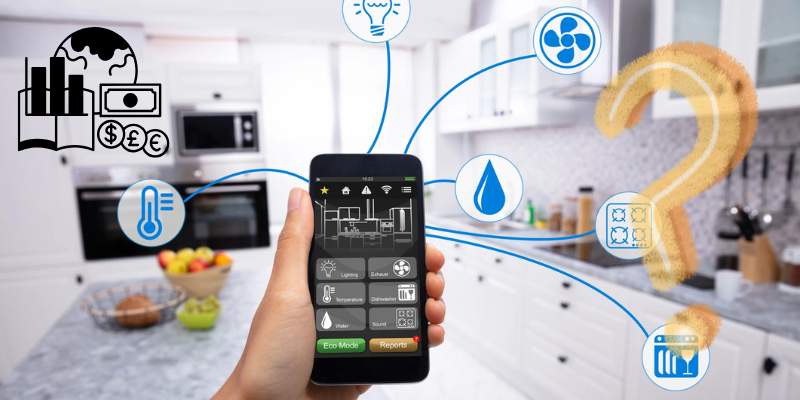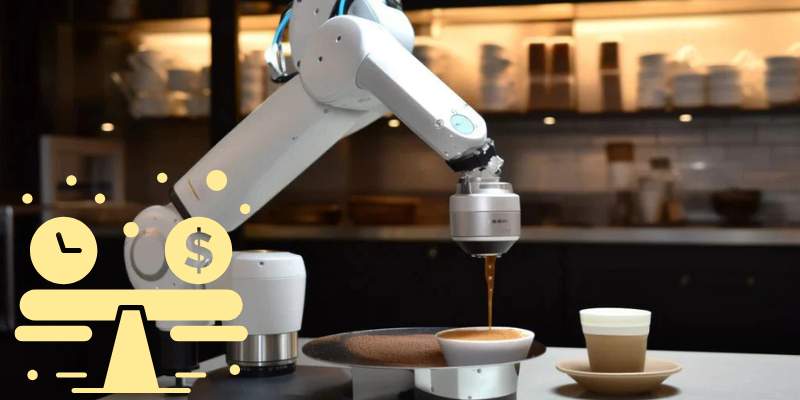Vacuuming is one of those chores that nobody brags about. It’s repetitive, it’s noisy, and it always seems to need doing at the worst times—like right when you’re rushing out the door or when guests text that they’re “ten minutes away.”
So it’s no surprise that robotic vacuums, led by the famous Roomba, swept their way into our homes over the last two decades.
But here’s what’s fascinating: they didn’t just stop at rolling around like blind little beetles bumping into furniture. They evolved. And they’re still evolving, powered by artificial intelligence that’s reshaping the way we think about household chores.
We’re at this tipping point now, moving from Roombas to fully autonomous cleaning systems. And it raises questions that go beyond just spotless carpets.
Can AI really take over something as constant and personal as keeping our homes clean? Do we trust it enough to run unsupervised? Or is this all just another expensive gimmick packaged as innovation?
The Humble Beginnings: Roombas Enter the Scene
When iRobot released the first Roomba in 2002, it felt like magic. A small disc-shaped gadget that wandered around the house sucking up crumbs while you sat on the couch? It sounded like science fiction.
Of course, the early models weren’t perfect. They got stuck on rugs, tumbled down stairs, or spent half an hour circling a chair leg like it was the Bermuda Triangle. But people forgave them. Because they were different. They gave a glimpse into what automation at home could look like.
And in many ways, the Roomba laid the groundwork for how we now think of AI in home. It was about convenience first and foremost. A taste of what happens when machines shoulder a slice of domestic burden.
The Rise of AI in Vacuum Cleaners
Fast forward twenty years, and robotic vacuums are almost unrecognizable compared to their clumsy ancestors.
Modern versions use cameras, LiDAR sensors, and AI algorithms to create detailed maps of your home. They learn your layout, avoid cables, and some even recognize pet droppings (because nobody wants that mess smeared around the living room).
Here’s what separates today’s models:
- Mapping intelligence: Instead of random patterns, they build maps, remembering where furniture is placed.
- Custom schedules: You can program them to clean specific rooms at specific times.
- AI object recognition: They detect socks, shoes, toys, and cables and steer around them.
- Integration with ecosystems: They talk to Alexa, Google Home, and even thermostats.
- Self-maintenance: Some empty themselves into bins and wash their own mop pads.
What once felt like a quirky gadget now feels more like an actual household assistant.
But Do We Really Need Machine?
This is the part where I get a little torn.
On one hand, yes, it’s wonderful to have a vacuum take care of the crumbs so you can focus on other things. But on the other hand, I sometimes wonder: do we truly need machine? for every single task?
Vacuuming isn’t complicated. It’s not like brain surgery. Yet the appeal of not having to think about it is powerful. And maybe that’s the deeper point. AI isn’t just replacing labor; it’s reducing mental load. It’s taking one tiny “ugh” off the never-ending list of household duties.
The Emotional Side of Clean Floors
Cleanliness has an emotional weight. Walking barefoot on a crumb-free floor feels oddly soothing. Seeing a tidy rug after a long day at work can bring a little sigh of relief.
But there’s also a psychological trade-off when you delegate this job to a robot. Some people feel liberated, while others feel uneasy. They worry about dependence, about forgetting how to do basic chores, or about trusting a device with that much autonomy.
I’ve caught myself peeking into the living room mid-cycle, not because I doubt the robot’s ability, but because it feels strange not being the one steering the vacuum. It’s a loss of control, subtle but real.
Market Growth and Popularity
The numbers tell the story.
- According to Statista, the global robotic vacuum market is projected to reach $14.5 billion by 2030, up from $5 billion in 2020 (Statista).
- A 2022 survey by Consumer Reports found that 40% of U.S. households either own or plan to buy a robotic vacuum within the next five years.
- High-end models now range between $800 and $1,500, with some systems topping $2,000 if they include docking stations with auto-empty bins and mop-cleaning functions.
This isn’t just a niche market anymore. It’s mainstream.
From Roombas to Fully Autonomous Cleaning Systems
We’re no longer just talking about single-purpose vacuums. The industry is heading toward integrated cleaning systems that can vacuum, mop, detect spills, and even coordinate with other devices.
Imagine this:
- Your robot vacuum notices pollen tracked in from outside.
- It signals your air purifier to adjust settings (purifiers: the silent partners in cleaner homes).
- It syncs with your laundry system (from dryers: room and washers) to run cleaning cycles at energy-efficient times.
That’s the vision: a network of AI-powered appliances working together to create a fully self-maintaining household.
Sounds futuristic, yes. But also slightly eerie. Do we want our homes to become ecosystems of machines that know more about our habits than we do?
Privacy Concerns: What Do These Devices Know?
Here’s where things get uncomfortable.
Modern robotic vacuums don’t just sweep—they map. Some use cameras that scan your furniture layout, creating digital blueprints of your home. That information, if stored or shared, is incredibly sensitive.
In 2022, there was a controversy when images from a robot vacuum’s test program (including photos of people inside homes) were leaked online (MIT Technology Review). That incident made clear that you know the data these machines collect isn’t trivial.
It’s not just about dust. It’s about privacy, security, and who owns the intimate details of your domestic life.
Maintenance and Hidden Costs
One of the overlooked realities is that these devices aren’t maintenance-free.
- Brushes need cleaning.
- Sensors need wiping.
- Docking stations require bag replacements.
- Repairs can cost hundreds of dollars if parts fail outside warranty.
And while companies market them as “set it and forget it,” the truth is you still need to babysit them occasionally. They can get tangled in cables, stuck under couches, or confused by dark carpets.
So yes, they’re more autonomous, but not infallible.
Emotional Nuance: Relief, Frustration, and Trust
I’ll admit, the first time my robot vacuum cleaned while I was at work, I felt a rush of relief walking into a spotless living room. But I’ve also felt deep frustration when it failed—like when it smeared a knocked-over juice box across half the kitchen floor.
That’s the emotional rollercoaster of relying on AI at home. Sometimes it feels like magic; other times it feels like betrayal. And unlike with a human, you can’t yell at the vacuum. You just sigh, clean it yourself, and wonder if convenience is worth the occasional chaos.
Environmental Angle: Energy and Waste
Robotic vacuums are often pitched as eco-friendly, with optimized cleaning cycles that save energy compared to traditional vacuums. But they also come with drawbacks:
- Frequent battery replacements.
- Docking stations that use energy 24/7.
- Disposable dust bags for auto-empty systems.
It’s a trade-off between efficiency and consumption, one that hasn’t been fully studied yet.
Do We Lose Skills by Outsourcing?
There’s also the cultural question: when we hand over chores to AI, do we forget how to do them ourselves?
Vacuuming seems like a small skill, but multiplied across tasks—cooking, laundry, cleaning—it adds up. Are we heading into a future where children grow up not knowing how to sweep a floor because they never had to?
Maybe that sounds alarmist. But think about how many of us can’t read paper maps anymore because GPS made it unnecessary. Skills fade when unused.
The Future: What’s Next for AI Cleaning Systems?
We’re on the edge of a new phase: truly fully autonomous systems. Imagine robots that:
- Detect dirt levels and decide when cleaning is necessary, without scheduling.
- Move seamlessly from vacuuming to mopping to disinfecting.
- Coordinate with smart lighting, HVAC, and laundry to create holistic cleanliness.
- Use advanced AI to predict messes before they happen (like noticing mud by the door after it rains).
It sounds futuristic, but prototypes already exist. The question is whether we embrace them fully—or resist giving away one more piece of domestic responsibility.
Conclusion: Convenience vs. Control
So, where do I land on this?
Robotic vacuums, and now autonomous cleaning systems, do bring real convenience. They give back time, reduce stress, and in many cases, clean better than we’d bother to on a busy day.
But they’re also symbols of a bigger shift—our homes filling with machines that know us intimately. And with that comes unease. Privacy risks. Dependence. Loss of small skills that once defined daily life.
The truth is, AI vacuums aren’t just about dust. They’re about trust. They’re about asking ourselves: how much of our homes are we willing to hand over to algorithms?
For me, the answer is somewhere in the middle. I’m grateful when my vacuum saves me twenty minutes before dinner. But I also keep a regular broom in the closet. Because sometimes, I don’t just want a clean floor—I want the simple satisfaction of making it clean myself.


